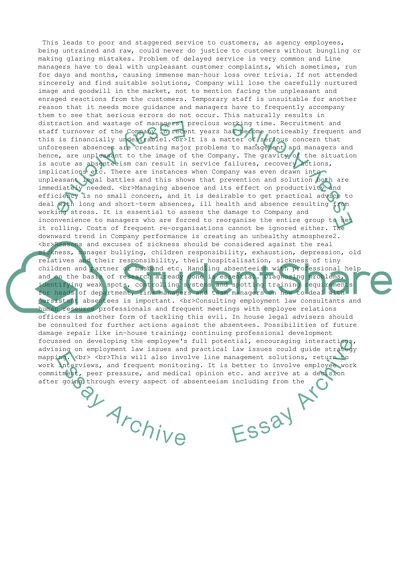Cite this document
(“Managing Absence Assignment Example | Topics and Well Written Essays - 2750 words”, n.d.)
Retrieved from https://studentshare.org/business/1534631-managing-absence
Retrieved from https://studentshare.org/business/1534631-managing-absence
(Managing Absence Assignment Example | Topics and Well Written Essays - 2750 Words)
https://studentshare.org/business/1534631-managing-absence.
https://studentshare.org/business/1534631-managing-absence.
“Managing Absence Assignment Example | Topics and Well Written Essays - 2750 Words”, n.d. https://studentshare.org/business/1534631-managing-absence.


